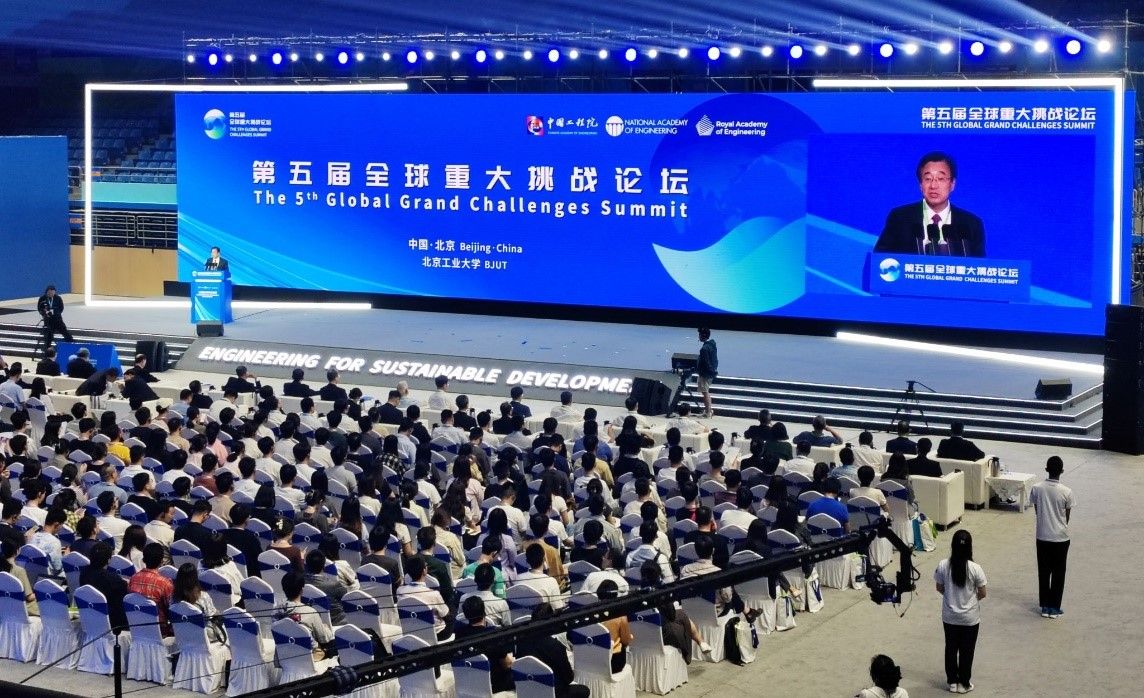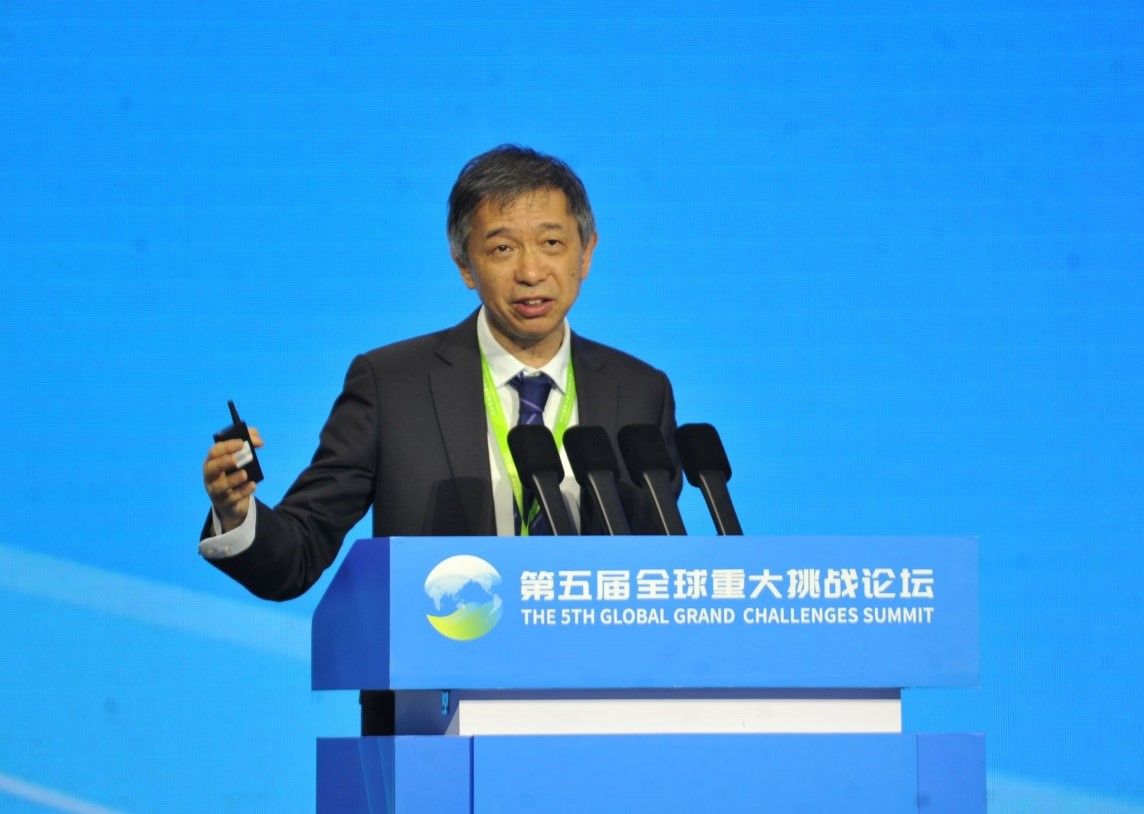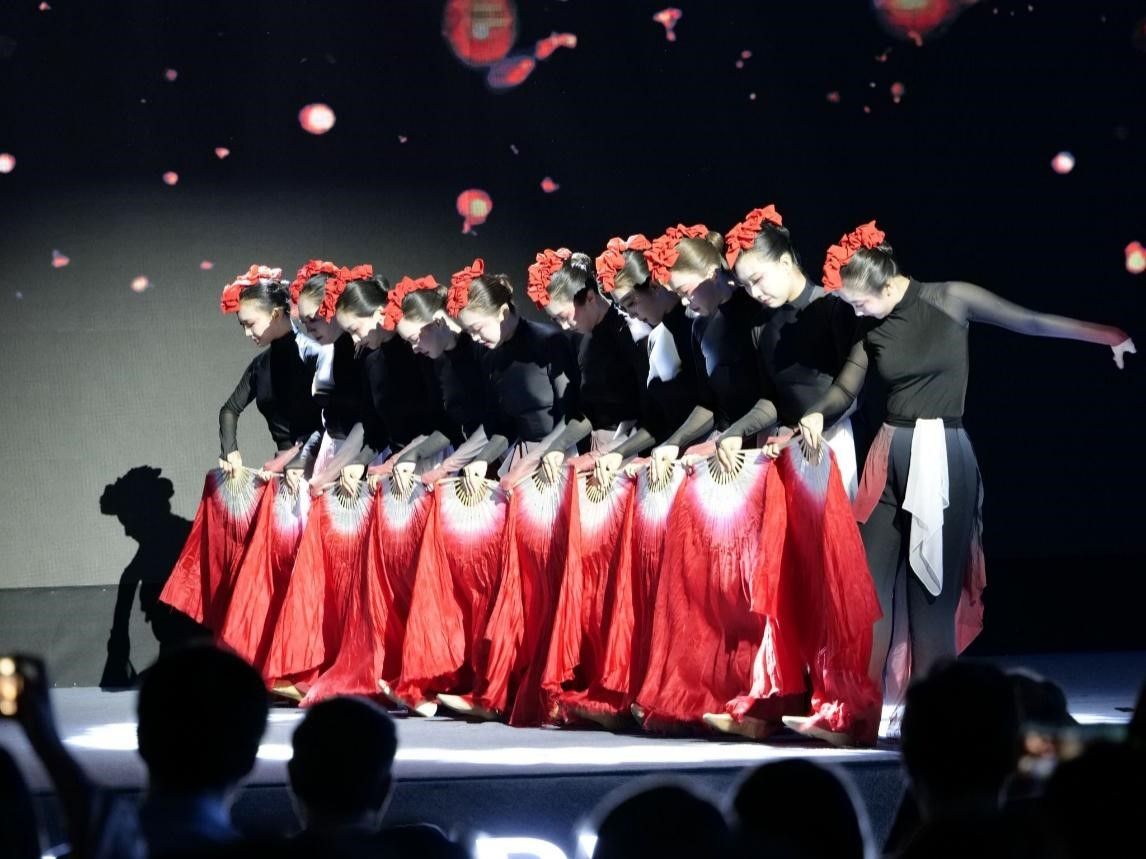


The 5th Global Grand Challenges Summit (GGCS) began on the evening of September 18th at the Beijing University of Technology's Olympic Stadium and lasted for three days. It was co-organized by the Chinese Academy of Engineering (CAE), the US National Academy of Engineering (NAE), and the Royal Academy of Engineering (RAEng), and was hosted by Beijing University of Technology (BJUT). As a top academic exchange platform, the forum is a model for global scientific and technological cooperation and exchange, and a bridge for scientific and technological cooperation between the three countries.
Under the theme "Engineering for Sustainable Development", the summit focused on three crucial topics: "Sustainable Infrastructure", "Engineering the Transition to Carbon Neutrality", and "Engineering Approaches to Digital Economy". Over 300 experts from China, the US, and the UK gathered both online and offline, and jointly explored the most pressing global challenges of the 21st century in conjunction with the United Nations' "Sustainable Development Goals". They explored current topics of major interest, cutting-edge theories, and interdisciplinary solutions, aiming to harness the power of engineering and technology in addressing these major challenges. The summit was attended by Jiang Zeting, Secretary of CPC BJUT Committee, Nie Zuoren, CAE Member and President of BJUT, as well as other members of the university leadership and representatives of faculties and students. The opening ceremony was moderated by Prof. Wang Chen, Vice President of CAE.

At the opening ceremony, Prof. Li Xiaohong, President of CAE, expressed his congratulations on the successful hosting of this forum, and extended warm greetings to experts and scholars from the engineering academies of China, the United States, and the United Kingdom who attended the event both in person and online. He underlined the obligation of the engineering sciences and technology community to achieve sustainable development, and expressed his belief that the summit would enable this community to contribute innovative solutions to challenges such as the difficulties involved in the "green" and low-carbon transitions, and the expanding digital divide. He emphasized the need to explore effective engineering and technological solutions through fostering deeper international collaboration, such as working even more closely with the NAE, the RAEng, and scholars worldwide. He also expressed the unwavering commitment of the CAE to harnessing the power of technology to promote the healthy development and enduring prosperity of the world, thereby ushering in a new era of high-quality development for humanity.

Prof. John Anderson, President of NAE, expressed in his opening remarks that the 5th GGCS marked the culmination of a decade of effort aimed at strengthening international cooperation in the field of engineering and solving global problems affecting mankind in a sustainable and equitable way. As global problems are constantly emerging, engineers from all over the world should take action, face changes, promote changes, and resolutely take the lead in achieving sustainable development on the basis of strengthened international cooperation. The Three Cs: creativity, collaboration, and commitment should be applied to engineering education and practice to build a resilient and sustainable future for the generations to come.

Sir Jim McDonald, President of RAEng, emphasized in his speech that the world looks very different now from how it did ten years ago, when the three academies met in London for the first time, and that engineers and engineering play a key role in building a better world. As national engineering academies, the CAE, NAE, and RAEng have the ability to ensure that technologies are applied in the best ways possible for the benefit of society worldwide. He stated that engineers must work together as much as possible, and that it is this which has been the true significance of the summit over the past decade. He also said that he looked forward to hearing from a number of great engineers across the summit program in the coming three days and sincerely hoped that cooperation between national academies of engineering would continue to make a vital contribution to the world around us.

Prof. Wang Jian, CAE Member, founder of Alibaba Cloud, and President of Zhejiang Laboratory, delivered a special report, titled "Computer-driven Scientific Discovery and Technology Innovation". He described the continuous emergence of technological innovations since the 1950s, which have had the dual effect of improving people's lives while also increasing resource consumption and consequently escalating carbon dioxide emissions. Addressing the question of "How to reduce carbon emissions and achieve carbon neutrality?" he emphasized the need for the optimization of resource utilization and the reshaping of 21st Century cities through computer-driven innovation.

The opening ceremony was followed by Session I: "Sustainable Infrastructure", moderated by Mr. Wu Zhiqiang, CAE Member and a professor at Tongji University.

On September 19th, the 5th Global Grand Challenges Summit (GGCS) entered its second session, focusing on "Engineering the Transition to Carbon Neutrality". The keynotes and panel discussions were chaired by Prof. Nie Zuoren, CAE Member and President of Beijing University of Technology.

On September 20th, the Summit entered its third session, focusing on "Engineering Approaches to Digital Economy". The keynotes and panel discussions were chaired by Chen Xiaohong, CAE Member and Secretary of the CPC Committee at Hunan University of Technology, and Business & Director of Xiangjiang Laboratory.



In the three days, hundreds of experts and scholars from the engineering sciences and technology community gathered both virtually and in person. Under the theme "Engineering for Sustainable Development," They delved into three topics of sustainable infrastructure, carbon neutrality, and digital economy, presenting 19 presentations and 6 panel discussions. Engaging in thought-provoking academic exchanges, they collectively explored cutting-edge theories and interdisciplinary solutions to address global grand challenges with the power of engineering and technology. This Summit highlighted openness, collaboration, initiative, and action, providing a high-end platform for professionals in the engineering sciences and technology community to exchange ideas. It set an example for global exchange and cooperation in science and technology, serving as a bridge for enhanced cooperation in science and technology between major countries in the world.



Jiang Zeting, Secretary of CPC BJUT Committee, Nie Zuoren, CAE Member and BJUT President, as well as other members of the university leadership and representatives of faculty and students attended the closing session. At the closing ceremony, the Joint Statement on Global Grand Challenges Summits, formulated by the CAE, NAE, and RAEng, was officially released. It has echoed the Summit's original mission, reviewed the fruitful collaboration, and envisaged the framework for future cooperation.

The Joint Statement points out that this fifth Summit marks the culmination of collaboration among the three academies. Envisioning the future, the three academies are committed to forging ahead on the path of progress. The CAE, NAE, and RAEng, in collaboration with their sister academies across the globe, will seek to further promote scientific openness, expand cooperative mechanism, and enhance the role of engineering in addressing the most immediate challenges of the present day, ushering in a brighter future for all.

CAE President Li Xiaohong, NAE President John L. Anderson, and RAEng President Sir Jim McDonald expressed their heartfelt appreciation for the invaluable contributions made by BJUT, who put in its utmost dedication to ensure the success of this Summit. The three Presidents also expressed their commitments to supporting the Joint Statement, pledging to embrace opportunities, pool strengths, foster collaboration, drive innovation, and ultimately improve the well-being of humanity.


Representatives of young scholars from the University of Cambridge and BJUT shared their experiences in engineering practices, expressing their optimistic hopes for the future development of engineering sciences and technology. They affirmed their determination to stand upon the shoulders of giants, strive for excellence, and contribute to a brighter future for the world of engineering.




The BJUT student dance troupe performed "Upstream Journey: Leaping", and the student symphony orchestra and traditional music ensemble performed "Jasmine Flower". The 5th Global Grand Challenges Summit concluded in grand style at BJUT.

The GGCS, co-hosted on a rotating basis by the CAE, NAE, and RAEng, is a vital mechanism of exchanges between the three academies. Since its inception in 2013, the Summit has remained true to its original mission. It strives to enhance collaboration in engineering and technology among the three countries and the world at large. It also focuses on leveraging engineering and technological advancements to tackle global challenges and nurturing the next generation of globally-minded talented engineers. The hosting of GGCS has not only fostered closer ties within the engineering and technological communities of the three countries but also offered substantial support in driving consensus-building and amplifying global collaboration in science and technology.
So far, the Summit has garnered extensive media coverage from over 20 leading outlets including Xinhua News Agency, and CCTV News, with over 3 million page views and a live audience of over 200,000 viewers.







